Review for Bleach: Series 10 Part 2 (2 Discs) (UK)
Introduction
Kazé are courting class actions from anime fans with OCD now. Bleach Season 10 Part 1 contained episodes from Season 10 sure enough. But Season 10 Part 2 begins with the concluding episodes of season 10, and then continues with season 11. Is there any mention of this in the blurb, anything on the packaging? When Bleach picks up after this, will the next boxset be Season 12 Part 1? We’d be left with an illogical gap in our Bleach collections where there ought to be a Season 11, except it’s bundled into season 10. Or will they just rename Season 12 to Season 11 instead and carry on logically, but putting the whole show out of sync. I’m just warning you now, so don’t blame me if all your hair falls out through stress and you wind up looking like Ikkaku.
You’d think that a teenager’s life would be complicated enough if he could speak to ghosts. But that was only the beginning for Ichigo Kurosaki. When he literally bumped into a Shinigami named Rukia Kuchiki, he was introduced to a whole new world. The Shinigami’s mission is to guide forlorn spirits known as Wholes to the Soul Society, and protect them and the living from Hollows, perverted spirits that have become monsters that prey on other souls, living or dead. They are not supposed to let the living know about this supernatural world, but not only does Ichigo see Rukia, circumstances force her to give him her powers, and train him to be a Shinigami while she regains her strength. Through their adventures, Ichigo learns that his classmates Orihime and Chad are similarly bestowed with spiritual abilities. He also meets Uryu Ishida, the last Quincy, heir to a tribe of spiritual warriors from the human world that once sought out and destroyed Hollows, before the Shinigami in turn eradicated them for disrupting the balance.
Season 9 was all filler, and I guess fans would have been relieved at the advent of season 10 to see the main storyline resume. Well it doesn’t take long for them to run out of manga material to adapt once more, and as mentioned in the opening paragraph, Kazé’s season 10 is everyone else’s season 10 and 11. The rescue mission to Hueco Mundo is truncated once more just two episodes into this collection, although it does at least deliver a major development in the story before it does so. Ichigo, Ishida, Rukia and Renji heading into the lion’s den to rescue Orihime may have been a bad idea, but the Soul Society sending in Shinigami as well might be worse. There then follows a two episode comedy filler interlude that follows up on the adventures of Rurichiyo, before season 11 is presented in its entirety, a story that takes us back some hundred years, and tells the tale of how Kisuke Uruhara (the be-hatted shop owner in Kurakara city) first became a Shinigami Squad captain.
11 episodes in all are presented across two discs from Kazé Entertainment, distributed by Manga.
Picture
Bleach has now gone widescreen. It’s now in the modern TV friendly aspect ratio of 1.78:1 anamorphic. And that’s the end of the good news. The last few releases of Bleach via Madman Entertainment had native PAL transfers, 25 frames per second with 4% PAL speedup, but of high resolution and free of any standards conversion artefacts. Not anymore. With Kazé’s release of Bleach, we’re back to the bad old days of NTSC-PAL standards conversions. It’s worse in my opinion, as my limited experience of Kazé output has shown that while their Blu-rays are sweet, and their PAL DVDs are acceptable, their NTSC-PAL conversions leave a lot to be desired, and are the least impressive of any distributor that I have reviewed.
Bleach’s 1.78:1 anamorphic image is now once more prone to significant ghosting and blended frames, a little more than you would expect from a standards conversion, but you wouldn’t expect the resolution and detail to be degraded as much as it is on these discs, nor would you expect the constant judder in pans and scrolls that makes you want to watch it on as small a screen as possible to avoid nausea.
Sound
There are some positives to be had in the audio department. The discs now have the surround flag activated, so you now have DD 2.0 Surround English and Japanese audio. It sounds exactly the same in practice however. More significant is that Kazé provide translated subtitles for the Japanese audio, and a signs only English track for the English audio. This season sees some new theme songs debuted for the series, but unlike the Madman discs, the songs don’t have subtitle translations for the lyrics. These being Kazé discs, you can’t change audio or subtitles on the fly, so Hard of Hearing English dub fans are out of luck.
Extras
You’ve probably already heard me whinge about Kazé discs and UPOPs, so consider it whinged again. These discs are locked up tighter than Fort Knox, and I had to guess at the run time for the episodes.
Kazé don’t put trailers on their discs, and neither do they offer a line art gallery. All you get are karaoke versions of the credit sequences, minus the credit text, but with a romanji (Japanese in English script) burnt in subtitle track that insists that you sing along.
Most episodes end with the Illustrated Guide to Soul Reapers Golden comedy sketches.
Conclusion
I like Bleach again, and once more it’s down to the fact that in this collection of episodes we get away from the main story. We get away from the interminable fights, and the ever increasing explosions of jutsu, my mistake, spiritual energy. I’m just wired the wrong way for shonen. The stuff that people actually tune in for, the stuff that lies at the heart of the genre is the stuff that sends me to sleep. Consequently I can’t really tell you all that much about the first two episodes of this collection, other than to say that stuff happens that does wake me up for a bit. There is then a little bit of filler before we get a prequel arc, which is the best thing I’ve seen in Bleach in many a release. It’s a relatively small, self-contained, and well-told story. It gets to the point quickly, tells its tale, and then it’s done and dusted, all in the space of seven episodes.
We begin with what for me is the tedium of Kenpachi and Nnoitora comparing sword sizes. It looks like the last gasp of the Rescue Orihime arc. The Shinigami have arrived, kicked butt, and saved the day, and the next step is to get on with the job and finish Aizen. Kenpachi tells Ichigo to finish what he started, to take Orihime and his friends home, and that would be that. Except that an almighty plot twist is about to hit. It’s all been a carefully planned trap, to draw the Soul Reapers in, and they are left trapped in Hueco Mundo while Aizen heads to the world of the living to enact his plans for Karakura City. But the Soul Reapers have a plot twist of their own to impart. And just when I’m awake and interested in the main storyline again, filler hits.
It’s just a short bit of filler, two episodes in length, which catches up to Rurichiyo, the bratty princess from the previous filler arc to see what she’s been up to. She’s actually trying to mend some fences, and restore the reputation of her house by improving relations with the local people and the other noble houses. Her retainers advise her to get diplomatic with the noble houses, but she’s got a plan for a kemari (Soul Society Soccer) tournament for the people. She got into a row with her bodyguard Kenryu about it and has run away once more to the world of the living. Ichigo and his friends get drawn into an unconventional soccer match to decide just who is right, and much comedy ensues, where Kon gets a kicking.
Then we get Season 11 in its entirety covering the final seven episodes of this collection. It’s an arc set a hundred years in the past in the Soul Society, and reveals how Kisuke Uruhara (the be-hatted shop owner) first became a Squad Captain, and then how it is he came to live in exile in the world of the living. It also tells the tale of how the Visoreds came into being. Remember the Visoreds? I didn’t. It’s the nature of a long running show like Bleach in that it will develop some characters for half a season or so, bring a storyline into focus, and then forget about it for two or three seasons. That’s made even longer with the addition of filler episodes.
I had completely forgotten the Visoreds, so that when the first episode of season 11 began, and revealed the various captains and lieutenants of the Soul Eaters 100 years previously, I got a faint nudge in the back of my mind at the familiarity of the character designs, the repetition of certain character traits, and familiar voice actors that were ringing bells. But it wasn’t until the narrator at the start of the second episode explicitly stated as such that I understood that these were characters that would subsequently crop up as Visoreds. Just referring to events that occurred a hundred odd episodes ago isn’t going to work with me, and the last time I had such a disconnect from a story so as to completely forget what happened a few chapters previously was when I read The Lord of the Rings.
Dubious narrative structure aside, these seven episodes are really a good story, a neat beginning, middle and end. We get to meet Kisuke as he was when he was a Soul Reaper, a somewhat naive, but skilled and unconventional lieutenant, sponsored for promotion by Yoruichi. We see his first few days at work as a newly minted Captain, having to work against his reputation to establish trust with his new squad members, and having the most infuriating lieutenant of his own to deal with. Hiyori is very unhappy about having Kisuke as a captain, and lets him know by repeatedly kicking him in the face. Kisuke isn’t beyond bending a few rules to get the best people for his squad, and to lead his research team, he even goes as far as springing public enemy number one from prison... a psychopathic reprobate named Mayuri...
In fact much of the charm of this arc lies in seeing familiar faces from the Soul Society as they were in their youth. For some, their past selves aren’t much removed from how they are today, for others we see them as children, and see how chance encounters shape their lives, or just the contrast in how they develop. The first few episodes in this arc are actually set 110 years previously, to establish the characters and set the scene. The main story unfolds ten years afterwards, when unexplained disappearances are affecting the Soul Society, and those ordered to investigate get drawn into the mystery with life changing consequences. When Uruhara gets involved, he winds up pitted against the Soul Society itself. Behind it all, master manipulator and already harbouring ambitions that exceed the scope of the Soul Society is a certain deceptively amiable young lieutenant.
Prequel stories are fun. Except maybe with Star Wars, but with Bleach this 7 episode arc reveals much about one of the show’s more enigmatic characters, and it also adds a whole lot of back story which really enriches and explains much. If you want to know about the Visoreds and how they came about, then this is essential stuff. My usual qualms about Kazé’s disc authoring notwithstanding, this collection of Bleach episodes is among the best that I have seen in ages. Unfortunately not all of Bleach is this good, and it looks like we have a couple more episodes of filler incoming with the next collection, before we get back to the egregious sword swinging of the main story.
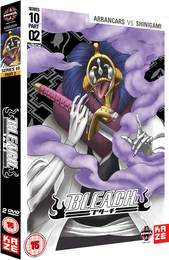
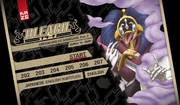

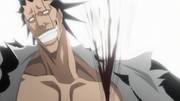
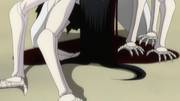

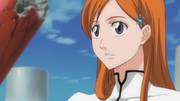
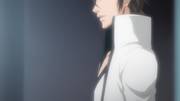
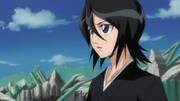

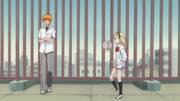
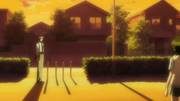
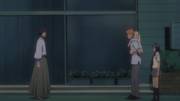
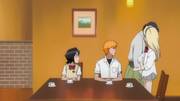


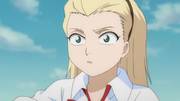
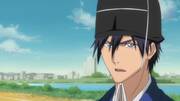
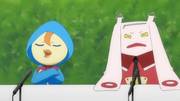
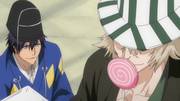
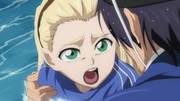
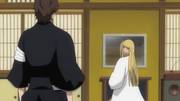
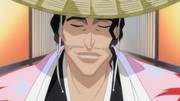
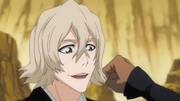
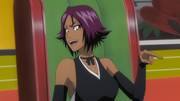
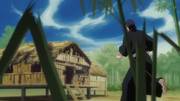
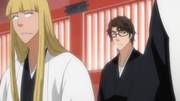

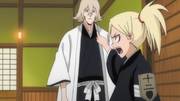
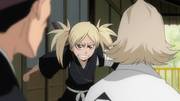
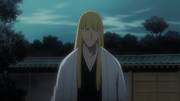

































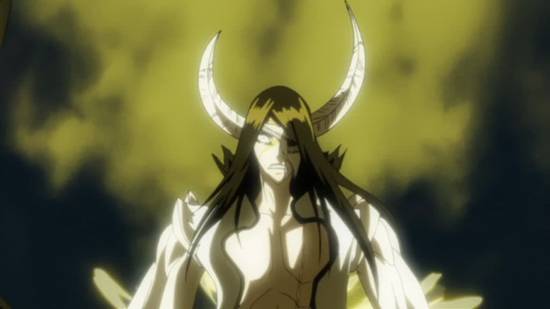











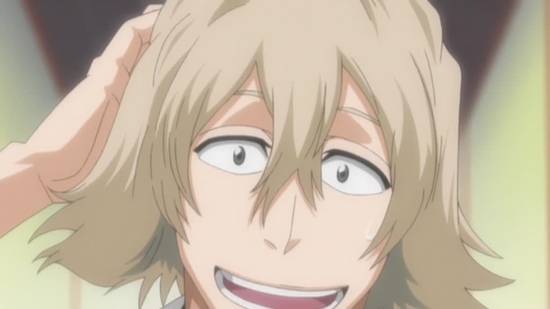
Your Opinions and Comments
Be the first to post a comment!